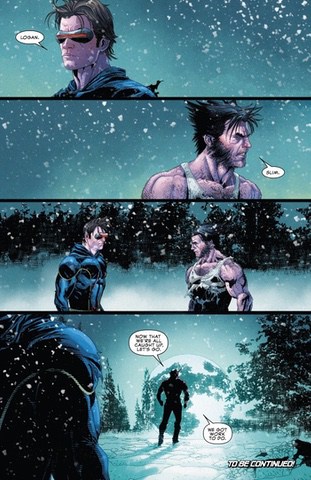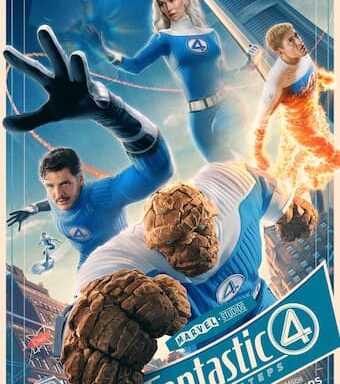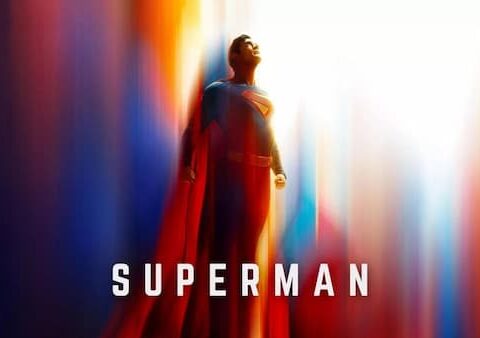As generally fantastic as all the lead-in to the massive Age of X-Man event was (see previous reviews here), even I was rather stunned by how good this run of Uncanny X-Men has been; particularly as it has been running alongside the big Age of X-Man line.
The idea of telling both stories parallel to each other – the ‘Age of X-Man’ reality on one hand and the Cyclops-centered ‘left behind’ story on the other – has been very clever.
While we see the other mutants living out their alternate or parallel reality in the Age of X-Man books, in the pages of Uncanny X-Men we watch those left behind trying to figure out their grim place in the bleak world that they’re trapped in.
I don’t know whether I would say I’ve been enjoying the Uncanny X-Men books more than the Age of X-Man books – as ‘enjoying’ is probably an inappropriate word.
But these stories have perhaps been more compelling – probably just because of their sheer bleakness; a tone that was vividly established in Uncanny X-Men #11 and particularly with the bleakness of the Blindfold story.
I’ll just say here, for anyone who hasn’t read it, Uncanny X-Men #11 should be mandatory reading – just for the Blindfold story alone, which will break your heart. That element – the Blindfold story – sets the vibe and the emotional undercurrent for the months’ of comic books that follow it.
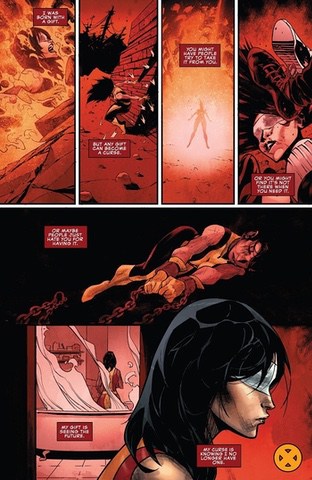
Uncanny X-Men #12 is just as bleak, with Scott and Logan discovering familiar fellow mutants being imprisoned and/or manipulated into servicing the anti-mutant agenda itself. A Transmode-Virus-infected Guido is discovered inside a Sentinel: leading Scott and Logan to discover the depths of the anti-mutant depravity and to liberating some old friends from a prison – thus allowing this book to be more fully populated with characters, including Illyana Rasputin (yay!), Rahne Sinclair and Alex Summers.
It’s grim stuff though: and Guido’s fate is both upsetting and premature.
The anti-mutant vaccine is to ensure that no new mutants will ever emerge in the future – providing even more fatalism and hopelessness to the reality that Summers, Logan and co are trying to cope with.
Havok’s “All our friends hate us, everyone’s dead, no future” (in Uncanny X-Men #13) sums up the situation perfectly.
There’s something bittersweetish about seeing this small group of survivors – Scott, Logan, Alex, Rahne, Dani, Illyana, Maddrox – hanging together like an old X-Men hangout: but so scaled down in numbers and with the ever-present backdrop of mutant extinction and a world without X-Men.
The highlight of Uncanny X-Men #13 is the novelty of having this rag-tag team setting out in their old, classic outfits, which includes Cyclops having to don his classic look. It’s a nostalgia hit that seems oddly both out-of-place in these grim circumstances and genuinely even more resonsant precisely because of those circumstances.
Scott’s team tracking down and conscripting the Dark Beast is a great plot development, giving us a fun encounter (and the pleasure of seeing Magik outwit and take down Dark Beast, standing over him triumphantly).
It’s also very appropriate to have Dark Beast incorporated into this story, as this whole of Age of X-Man thing is an Age of Apocalypse echo – and Dark Beast came from the original 1996 Age of Apocalypse.
One of the interesting things throughout this run is watching the different ways Scott has to maneuver – the different deals he has to make and the various actions he takes: ranging from the morally questionable act of recruiting someone like Dark Beast to making a deal with Valerie Cooper in Uncanny X-Men #14 or working covertly with Captain America as the story develops.
Said deal with Val Cooper involves Scott’s X-Men team getting involved in geo-politics on foreign soil, with the pay-off being a new safehaven for surviving mutants (or Morlocks, at any rate); while his collaboration with Captain America involves using Scott’s X-Men to secretly police potential mutant-related problems or mutant troublemakers.
Uncanny X-Men #14 is a particularly good chapter: again, it really feels reminiscent of the Age of Apocalypse itself, with the feeling that this Uncanny X-Men run is more akin to the AoA dynamics than the actual of Age of X-Man books themselves are. The discovery of the various mutant refugees in the Morlock tunnels (many of them dead, some alive) is a particularly grim development that has this AoA vibe to it.
As with every new chapter, Uncanny X-Men #14 does this cool thing of introducing new characters and familiar faces into the mix: in this instance, the team’s foray into the Morlock tunnels leads to an encounter with both Callisto and Chamber (Johnothan Starsmore). Chamber’s appearance was especially a pleasant surprise for me, being a big fan of the mid-90s Generation X book: and Starsmore’s hostile and barbed attitude towards Scott is kind of fun (and appropriate).
Uncanny X-Men #15 takes things up a level, beginning with a visit from ‘Steve Rogers’ (more on ‘Steve Rogers’ shortly), who comes to offer discreet help to Scott and his operation and warns Scott against trusting Val Cooper and the State Department. The character dynamics continue to be engaging, in this instance particularly regarding the relationship with the Dark Beast, who performs unsanctioned surgery on Dani and the Transmode-infected characters.
The sight of Hope Summers leading a Mutant Liberation Front is another nice touch, again resonating with old X-Men lore, albeit with newer upgrades more suited to the current context: likewise with Magneto (really Magento’s clone, Joseph) showing up in the next book and leading a new Brotherhood of Evil Mutants type gang.
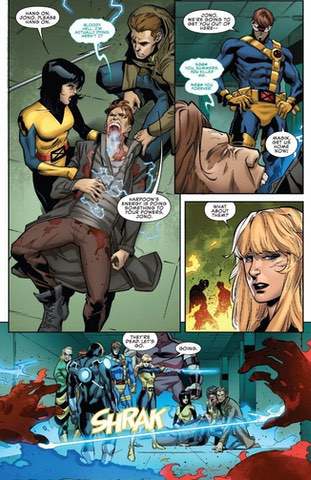
It’s great to see Hope show up in any case, while the conflict between her and Scott is well grounded in recent X-Men stories and events. However, the sight of a very emaciated and ghostly looking Banshee is a little hard to take.
What we see here, at any rate, is growing tension and conflict – both in terms of Scott’s and the X-Men’s relationship with outside elements and within the ranks of Scott’s team itself. This progresses further in Uncanny X-Men #16, with Scott stepping down as team leader and allowing the group to become a democracy without a chief. We also seen Rahne decide to leave the group and go off on her own.
An encounter with Joseph (Magneto’s clone from back in the day) in Uncanny X-Men #16 provides another nostalgia-tipped spectacle, playing in to the old X-Men tropes: we get the classic line-up and outfits for the likes of Toad, Pyro and Juggernaut, and it feels like going back in time – but, as with the Morlock tunnels previously or a version of the Mutant Liberation Front we briefly saw in Uncanny X-Men #15 – these are each like short-lived bursts of the classic past coming into the present narrative or context only to fizzle out again and amount to nothing.
But I do like the idea of Joseph deciding to take on the Magneto mantle and perhaps do what he thinks the real Magneto would be doing in this new world if he were here. Meanwhile, bringing in another blast from the past in the form of Kwannon is an interesting move: and having Cain Marko (Juggernaut) join Scott’s team has novelty value.
Uncanny X-Men #17 centers on the loss of Rahne Sinclair – an event that, itself, hit me harder than I’d think it would, particularly when we see a flashback sequence of how she met her end. It’s not as oppressively upsetting as Blindfold’s death in the earlier story, but it’s still pretty emotional: and what’s particularly striking is how pedestrian and callous her death is.
For a character we’ve known and loved for decades to fall at the hands of common, racist street-thugs (not some super villain and not in the pursuit of some lofty, heroic goal) in a park somehow makes Rahne’s exit all the more tragic.
Needless to say, Rahne’s situation causes even more friction in Scott’s group: and Logan’s way of dealing with his grief is particularly appropriate, as he goes off to enact a strange mixture of therapy and revenge.
It’s a fitting Wolverine moment; but it also really highlights the level of hopelessness and despair characterising the X-Men’s situation.
It doesn’t get any better in Uncanny X-men #18, in which we lose Chamber (Jon Starsmore) at the hands of the Marauders: and at this point we have to wonder how much bleaker this could all possibly get.
Every chapter, it seems we’re losing one of our guys – either to death or from desertion. In this same issue, Shan also departs the group, as does Logan. An encounter with Mr Sinister livens things up, but the real intrigue rests with the emergence in the shadows of both Mystique and Emma Frost – and particularly the mystery of why no one seems to remember who Emma Frost is – a question that is answered in Uncanny X-Men #19, where we get the backstory of what Emma has been doing in the background while all of this storyline has been unfolding.
It’s always good to see Emma Frost in her natural role – plotting and scheming in the shadows, particularly when you throw the likes of Mystique or Sinister into the mix too. As it happens, Emma has been behind much of what’s been going on in the passed several books, including most of Logan’s actions; though she too is being somewhat coerced by a government-linked agency.
This comes to a head in Uncanny X-Men #20, with a showdown between Logan, Emma and co. We also see Scott learning that the Captain America he’s been dealing with for a number of installments now was in fact not Cap at all (we’ve already learnt that it was Mystique by this point), while we also learn that Dark Beast has come up with a counter-measure to the anti-mutant vaccine – though it’s a measure that is too extreme for some of the X-Men.
On a minor side-note, Uncanny X-Men #20 and #21, by the way, also drops us a Fabian Cortez cameo, which is mostly irrelevent, but a surprise – I can’t remember the last time I saw Cortez show up. It’s weird to have a villain who was SO prominent in the X-books when I was growing up in the early 90s and yet who is now such an irrelevent, scarcely-seen bit-player.
In Uncanny X-Men #21, Scott and his team finally come face to face with Emma; only to learn that Ms Frost has had a plan all along to save mutantkind – a plan that Hope Summers confirms. I love seeing Emma as the mastermind here – almost as much as I hated seeing Emma as the mastermind in the Death of X story a few years ago (reviewed here): which demonstrates that the very same dynamic can be either brilliant or terrible, depending on the quality of writing and storytelling.
As this whole epic story approaches its conclusion, it’s just worth noting again how high a quality the storytelling, character work and plot pacing has been throughout this, maintained for multiple installments. It’s also worth stopping to notice how delicious and novel a mix of characters we’ve got here: we may have the more obvious characters like Scott and Emma as the central players, but we’ve also got everyone from Sinister and Mystique to Hope Summers and flipping Fabian Cortez all involved in this story.
Uncanny X-Men #22 brings everything to a conclusion. It’s important to have read Age of X-Man Omega before reading this issue: as this is where the Age of X-Man books and this Uncanny X-Men run converge into a finale.
While Uncanny X-Men #22 probably isn’t as intriguing as previous chapters, it makes up for this with its strong themes, key moments and of course its role in wrapping up this long, epic saga.
While it proves redundant by the end, Emma’s grand plan to make humans forget about the existence of mutants (so that mutants can move about freely without being noticed) was an interesting one with some potential. It doesn’t matter by the end – which makes one think this Emma plan should’ve been implemented earlier in the series, to give more time for it to be explored.
At any rate, this book has some strong moments: Scott and Logan coming to terms with each other as they make a joint last stand being one of them. On the other hand, Alex’s sacrifice early on seemed arbitrary and completely unnecessary.
But the big moment is the moment when all of the missing X-Men suddenly re-appear (and right in the nick of time) to save the day. While there’s something cliched and obvious about this moment, there is also undeniably something dramatically satisfying about it too.
The X-Men’s return from the Age of X-Man reality occurs precisely at the moment that Scott and Logan are facing their final stand and all hope appears to be lost. It’s actually very reminiscent of the Avengers: End Game finale, where all the previously-missing heroes show up at the last minute to help Captain America take on Thanos’s army. Cliched as it is (which is unfortunate, as this series has generally been free from cliche), it just works – both as a fist-in-the-air moment and as an emotional pay-off after months of bleak storytelling.
It still could’ve been a stronger finale: but it’s hard to complain too much at this point, as these last several months of storytelling have been generally superb.
This run of books – starting from Uncanny X-Men #11 – has been compulsive reading throughout, superbly plotted and with deep, meaningful character elements in every chapter. This whole run has been a creative triumph. Following this run – and the Age of X-Man – is going to be tough work.
